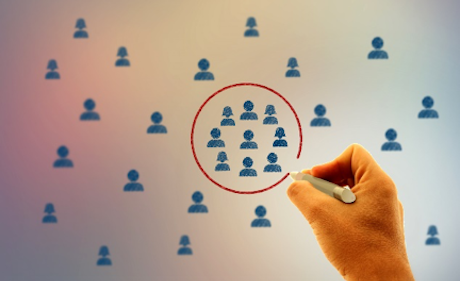An mHealth Perspective on Patient Centricity
John Reites, formerly of Quintiles, and current Chief Product Officer at THREAD Research, discusses how mHealth is incorporated in clinical trial patient centricity.
Over the next month, we will be discussing patient centricity in many different concepts from sponsors, technology companies, and other stakeholders. In this piece, we discover that technological enterprises have their own perspective on the topic of patient centricity. In this interview, John Reites, former head of Digital Health acceleration at Quintiles, and current Chief Product Officer at THREAD Research, will discuss how mHealth is incorporated in clinical trial patient centricity. John will be speaking at PanAgora’s Patient Experience Summit April 6-7 held on the Genentech campus.
Moe Alsumidaie: From a technology standpoint, what does patient centricity mean to you?
John Reites

John Reites: Patient centricity means that we don't develop or provide remote patient research solutions by just thinking about patients. It means that we start thinking like patients. We bring them along in the journey to develop, contribute and be a part of the platforms developed that they will use in our research studies.
Patient’s expectations are rising as they engage with mobile solutions in their daily lives as they engage with companies like Amazon, Target and Disney. As those mobile, consumer-centric solutions become more advanced, patients come to expect them similar experiences in their clinical research studies. Patient centricity is not just about the mobile solution, but also about keeping up with the latest innovations in transparency, mobile behavior, digital enablement factors and usability from other industries. It’s about understanding the intersection of clinical research science, technology and how patients engage with mobile to create solutions that patients don’t just need, but also want.
MA: What are the benefits and pitfalls of using mHealth to collect study data?
JR: There are many benefits that are proven today and many more still under research. mHealth approaches provide opportunities for faster, cheaper and more engaging research experiences with researchers and patients. These designs also help us capture research data throughout the study, not just during clinic visits. Biopharma, CRO and academic research clients that have adopted our platform are launching studies and collecting data from patients directly in weeks. These approaches are leveraging active and passive data collection through mobile with patients to decrease the burden on researchers in collecting, verifying and managing the administration of this work.
mHealth also has challenges that our industry is working through in a number of ways. In our client’s remote patient research studies, we are collecting more data in one day from one patient than most of their studies collect from all patients for the duration of the study. When you collect such large amounts of data including contextual, wearable, medical device, third party integration and many other passive data elements, you have to have a plan to develop insights that can support the patient and deliver more value from the data collected. In my experience, this requires more than the technology analytics platform, but requires teams of skilled data scientists at Sponsors, CROs and other life science consultants who know what to do with the data. The other challenge is that a lot of mobile health studies are disconnected from eDC systems, CTMS and other solutions our research teams use to manage other aspects of research studies. We take a unique approach and have partnerships that make these connections for our clients, but this requires new thinking and openness to industry partnerships.
MA: How is mHealth changing the way we collect data on clinical trial endpoints?

JR: By expanding data collection capacities, mHealth is introducing new forms of data collection. One of the many I am most excited about is with Electronic Device Report Outcomes (eDROs). Think of eDRO like an objective Electronic Patient Reported Outcomes (ePRO). ePRO’s are important, but subjective. eDROs use the sensors within the mobile phone itself (user interface, accelerometer, gyroscope, microphone, camera, speaker) couple with ePROs, surveys and external data sources to generate exploratory data around things like patient fitness, dexterity, cognitive skills and memory. These are exciting innovations in eDRO that we develop for pharma, CROs and academic researchers.
Using mHealth effectively is not just about making eConsent or ePROs easier or more cost effective, but is about capturing current and new data from patients as they live their lives outside of the research clinic. It is also important note that most, but not all mHealth generated endpoints are typically secondary or exploratory endpoints, not primary endpoints as we utilize them in Phase I, II, III and IV studies.
MA: If every study requires a customized mHealth solution, how do you scale the solutions efficiently?
JR: We believe every study should have the opportunity to be customized within a platform that provides research expertise, industry standard validations and scale to be optimized overtime. Being patient centric in our mobile solutions means that some components are repeatable, but many other features of a study app need to be added, removed or adapted specific to a patient population and/or study design. We built THREAD from our experience to meet this challenge and reduce costs so that our clients could spend more budget on innovative designs, eDROs and conducting more studies with the same budget.
Moe Alsumidaie, MBA, MSF is Chief Data Scientist at Annex Clinical, and Editorial Advisory Board member for and regular contributor to Applied Clinical Trials.